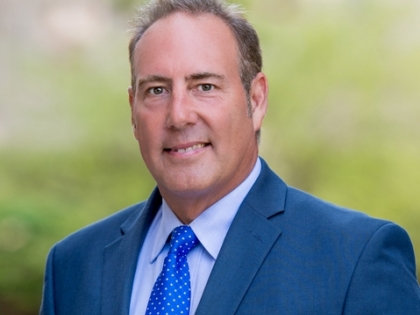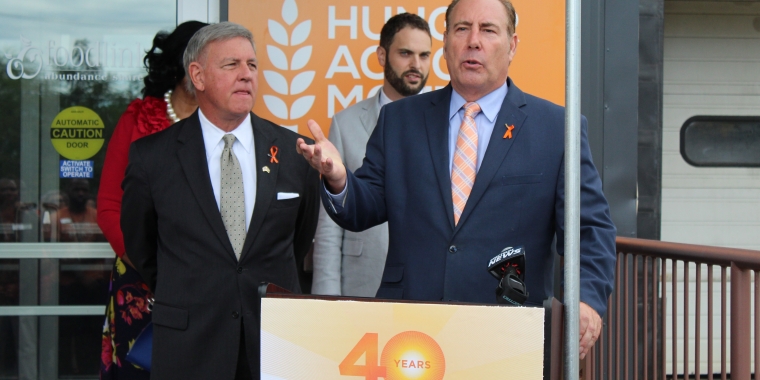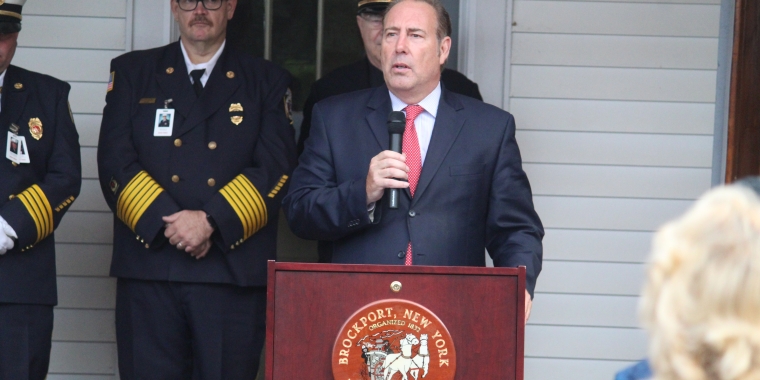
Senate Passes 2016-17 State Budget
April 1, 2016
-
ISSUE:
- State budget

The New York State Senate today passed the $155.6 billion 2016-17 State Budget that reflects the Senate’s commitment to improving economic opportunities for all New Yorkers. The budget increases school aid by $1.5 billion and eliminates the Gap Elimination Adjustment (GEA) education funding cuts, provides one of the largest income tax reductions in history for middle class taxpayers, ensures regional balance in infrastructure investments, and builds on the state’s progress in making New York more affordable.
RESTORING FISCAL DISCIPLINE
Capping State Spending:
For the sixth straight year, the budget stays within the self-imposed two-percent spending cap. This fiscal restraint has already saved New York taxpayers a cumulative total of approximately $31 billion.
MAKING RECORD INVESTMENTS IN SCHOOLS
Providing A Record Level of Education Funding for Schools:
Schools will see a $1.5 billion increase in aid in this year’s budget for a record total education investment of nearly $25 billion. This increase is hundreds of millions of dollars over the original Executive Budget proposal and when combined with the STAR school tax relief program, the state’s total commitment to supporting public education is more than $28 billion this year. The budget highlights include:
- · A $1.06 billion increase in total operating support to include a $626.6 million increase in Foundation Aid over 2015-16 and the elimination of $434 million in GEA cuts;
· Full funding of $341.4 million in Expense Base Aids;
· Doubling the grants to aid Charter schools to $54.8 million; and
· Restoring $56 million in STAR benefits as a result of rejecting the Executive Budget proposal to cap STAR at 2015-16 levels.
Ending the GEA in 2016:
The Senate succeeded in permanently eliminating the $434 million remaining of the Gap Elimination Adjustment (GEA) cuts for schools this year as part of the final budget. The GEA education budget reductions was first imposed on New Yorkers in 2010 by former Governor David Paterson and the Democrats who controlled the Senate and Assembly. The entire Senate Republican Conference voted against these severe cuts to the bottom lines for public schools and year after year, Senate Republicans have consistently led the effort to phase-out the GEA.
PROVIDING REAL TAX RELIEF
New Middle Class Income Tax Cut:
Millions of middle class New Yorkers will be eligible for a new tax cut that totals $6.6 billion over the first four years and brings middle class income taxes down to the lowest rate since 1948. By 2025 when the tax cut is fully phased in, it will provide an average savings of $700 per taxpayer per year, for an annual total savings of $4.2 billion.
The budget continues the current middle class tax rate of 6.45 percent from 2016 to 2018. Starting in 2018, additional cuts begin.
Individuals and businesses filing under the personal income tax (PIT) eligible for tax rate reductions of 20 percent (6.85 percent to 5.5 percent) when fully implemented include:
- · Single filers with taxable income between $20,000 and $75,000;
· Heads of households with taxable income between $30,000 and $100,000; and
· Married joint filers with taxable income between $40,000 and $150,000.
Individuals and businesses filing under the PIT eligible for tax rate reductions of 12.5 percent (6.85 percent to 6 percent) when fully implemented include:
- · Single filers with taxable income between $75,000 and $200,000;
· Heads of households with taxable income between $100,000 and $250,000; and
· Married joint filers with taxable income between $150,000 and $300,000.
Without this tax reduction, taxpayers would have seen their taxes increase on average by $155 a year - for an annual total of $700 million - when the current tax rate expires in 2018.
Property Tax Savings:
This year’s budget continues providing the funds needed to implement $3.3 billion in STAR savings for property taxpayers. This will allow $414 million in property tax rebate and freeze checks that will be issued this year, with the average savings of $350 per eligible household. Basic and Enhanced STAR savings will be $2.7 billion, and New York City PIT-STAR savings will be $618 million.
ENSURING FAIRNESS IN TRANSPORTATION FUNDING
Transportation Parity:
The budget included a major Senate priority of ensuring transportation funding that was distributed fairly and regionally-balanced. It includes a record $27.1-billion transportation capital plan to achieve true parity in infrastructure funding between upstate and downstate.
Improving the State’s Roads and Bridges:
The state’s Consolidated Local Street and Highway Improvement Program (CHIPS) will receive $438 million this year to help local governments move forward with important local highway, road, and bridge repair projects. In addition, the Pave NY/Bridge NY program will receive $800 million over the next four years for local roads and bridges. This includes $400 million ($100 million per year) for local projects distributed based on the CHIPS formula and $400 million for local bridge projects that will incorporate local solicitation.
Other Transportation Investments:
This year’s budget includes $1 billion over five years for other transportation modes, including $397 million for upstate and non-MTA downstate transit systems, $352 million for rail freight, and $282 million for aviation.
MAKING COLLEGE MORE AFFORDABLE
Supporting Tuition Aid and Public Colleges:
The budget provides more than $1 billion for the Tuition Assistance Program (TAP) and freezes SUNY and CUNY tuition this year. The new budget also boosts funding for SUNY and CUNY community colleges with an additional $20 million, increasing the full-time equivalent (FTE) funding for the state’s community colleges by $100 and making the base aid $2,697 per FTE for 2016-17.
Rejecting the Use of Taxpayer Dollars to Fund College Tuition for Illegal Immigrants:
The final budget rejects an Executive Budget proposal that would have cost state taxpayers $27 million and reward people who are here illegally by giving them free college tuition. The measure would have extended all other criteria, exemptions or opportunities found within the education law - including all scholarship and tuition assistance programs funded with state tax dollars - to illegal immigrants while hardworking middle-class families are already being forced to take out massive college loans to pay for higher education.
HELPING MEET THE HEALTH NEEDS OF NEW YORK’S FAMILIES
Paid Family Leave:
The budget initiates a new program to allow working New Yorkers to spend time with a sick family member or bond with a new child. That program will be phased-in over the next four years, and will include employees who have been in their current job for at least six months to provide protections and necessary financial resources so that family support can be available.
Funding for Health Care Capital:
Community-based health care providers, hospitals, nursing homes, home care and other facilities statewide will be eligible to receive $200 million in new funds from this budget to support critical capital and infrastructure improvements, as well as to integrate and further develop health systems.
Heroin Prevention, Treatment, and Recovery:
The final budget includes $166 million in funding to help address the challenging public health crisis caused by heroin and opioid abuse in communities throughout the state. An increase of $25 million above the Executive Budget proposal was strongly supported by the members of the Senate’s Joint Task Force on Heroin and Opioid Addiction to help strengthen abuse prevention, treatment, recovery, and education services.
Fighting Lyme Disease:
The Senate’s Task Force on Lyme and Tick-Borne Diseases, established to help combat these growing health concerns, worked to approve $600,000 in this year’s budget for research, education, and prevention efforts.
Family Health Initiatives:
The final budget restores millions of dollars in funding cut in the Executive Budget proposal for women’s and family health initiatives, among other programs. It includes $25.3 million for Cancer Services Programs; $26.3 million for Nutritional Information for Women, Infants, and Children; $9.7 million for chronic disease prevention (including diabetes, asthma, and hypertension); $5.5 million for Rape Crisis Centers; $2.3 million for the Prenatal Care Program; $9.65 million – a $1 million increase – for the Doctors Across New York Program and restores $25 million in Excess Medical Malpractice Coverage to recruit and attract physicians to underserved communities; and $1 million to support organ donation, among other programs.
Support for Seniors:
The budget will fully fund the state’s elderly Pharmaceutical Insurance Coverage (EPIC) program at $131.5 million to help seniors with their prescription drug costs. To help protect vulnerable senior citizens, the budget includes $700,000 to support elder abuse prevention initiatives. Other highlights include $28.9 million for Community Services for the Elderly Program; $26.6 million for Alzheimer’s programs; $172,000 for the New York Foundation for Seniors Home Sharing and Respite; and $63,000 for the Senior Action Council Hotline.
PROTECTING THE ENVIRONMENT
Record Level of Funding for the EPF:
The budget includes record funding of $300 million for the Environmental Protection Fund (EPF) to protect natural resources and ensure clean water and clean air. This is a 70-percent increase of $123 million over 2015-16 funding.
Additional Water Quality Improvements:
The Senate successfully advocated for more funding to support critical water and environmental infrastructure improvements in the final budget. It provides an additional $200 million over the next two years to build upon the investments included in last year’s Water Quality Improvement Act. Municipalities will now be eligible to receive a total of $350 million in grants in 2016-17 and 2017-18 to repair and replace existing wastewater and drinking water infrastructure.
GROWING NEW YORK’S FARMS
Restoring Funding Cuts:
The Senate succeeded in restoring more than $9 million for 30 important agriculture programs that were cut in the Executive Budget proposal. These measures are necessary to support the growth of New York’s agriculture industry and helping family farms succeed.
Veteran-Owned Farm Program:
The budget includes $115,000 in new funding for an innovative proposal by Cornell’s Small Farms Program to help establish up to five veteran-owned small farms through a first-in-the-nation pilot program. Returning veterans and those seeking a career change could be encouraged to try agriculture, utilizing benefits they’ve earned under the GI Bill to gain training and expertise to begin their own successful small business. In turn, these sites would be available to train additional veteran-farmers in future years.
SUPPORTING OUR VETERANS
The new budget continues the Senate support for the heroic service men and women who have sacrificed so much to serve our nation by including funding for programs including: $2.8 million for the Joseph P. Dwyer Veteran Peer-to-Peer Program; $500,000 for the NYS Defenders Association Veteran’s Defense Program; $500,000 for the Veterans Outreach Center in Monroe County; $450,000 for the Veteran’s Mental Health Training Initiative; $200,000 for Legal Services of the Hudson Valley Veterans and Military Families Advocacy Project; and $200,000 for Warrior Salute, among other initiatives.
Share this Article or Press Release
Newsroom
Go to NewsroomSenator Robach Participates in the Annual ALS Walk
September 17, 2018

Recognizing Hunger Action Month
September 14, 2018

Improvements Coming to the Blue Cross Arena
September 14, 2018

Brockport Fire Department 9/11 Remembrance
September 11, 2018
